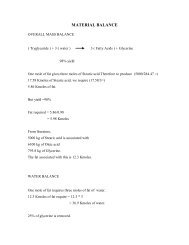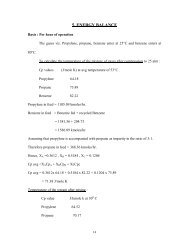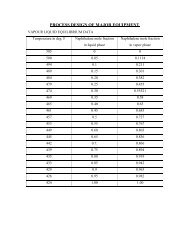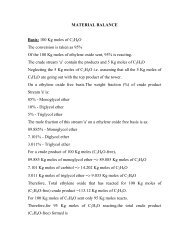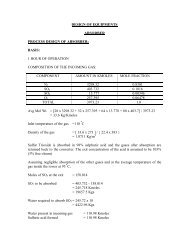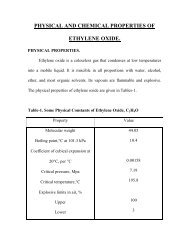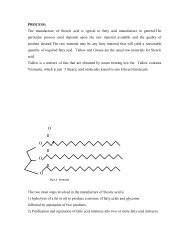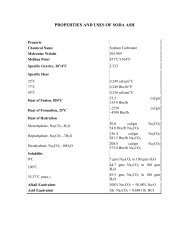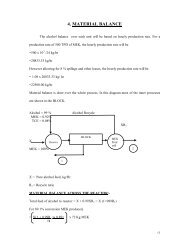Terephthalic acid Methods of Production
Terephthalic acid Methods of Production
Terephthalic acid Methods of Production
Create successful ePaper yourself
Turn your PDF publications into a flip-book with our unique Google optimized e-Paper software.
Polymer Grade <strong>Terephthalic</strong> <strong>acid</strong> (Purification):<br />
Polymer grade <strong>Terephthalic</strong> <strong>acid</strong> is produced by a separate purification process. The<br />
<strong>Terephthalic</strong> <strong>acid</strong> produced by the above mentioned methods cannot be used in the<br />
manufacture <strong>of</strong> polymers.<br />
Amoco Purification method:<br />
This process is used to purify <strong>Terephthalic</strong> <strong>acid</strong> produced by bromine promoted air<br />
oxidation <strong>of</strong> p-Xylene. The product contains less than 25ppm <strong>of</strong> 4-formylbenzoic <strong>acid</strong>,<br />
which is main impurity in the feed. Crude <strong>Terephthalic</strong> <strong>acid</strong> and water are fed<br />
continuously fed into a mixing tank to give a slurry containing at least 10 wt% <strong>of</strong><br />
<strong>Terephthalic</strong> <strong>acid</strong>. The slurry is pumped through a preheater and into a dissolver, which<br />
operates at • ºC. The effluent from the dissolver is a solution and it flows through the<br />
hydrogenation reactor which contains noble-metal catalyst on a carbon support. The<br />
pressure in the reactor is maintained above the partial pressure <strong>of</strong> steam to maintain a<br />
liquid phase and to ensure an adequate supply <strong>of</strong> hydrogen.<br />
Mitsubishi Decarbonylation Process:<br />
In this process is used to purify <strong>Terephthalic</strong> <strong>acid</strong> produced by the liquid phase air<br />
oxidation <strong>of</strong> p-Xylene. Crude PTA dissolves in a solvent and the solution is passed into a<br />
reactor where the structures <strong>of</strong> principal organic impurities are altered. The solvent is<br />
usually water and the reaction step is usually the decarbonylation <strong>of</strong> 4-formylbenzoic<br />
<strong>acid</strong>, which takes place at 250-300ºC in the presence <strong>of</strong> palladium on carbon catalyst.<br />
After the reaction <strong>Terephthalic</strong> <strong>acid</strong> is recovered by continuous crystallization and<br />
filtration.<br />
Modification <strong>of</strong> Henkel Processes:<br />
The Henkel processes can be modified to yield polymer grade <strong>Terephthalic</strong> <strong>acid</strong>. Henkel<br />
II process begins with the crystallization <strong>of</strong> dipottasium terephthalate from an aqueous<br />
solution. After recovery the crystals are redissolved in water and treated with alkali<br />
permanganate at 40-100ºC and then passed through a bed <strong>of</strong> activated carbon for removal<br />
<strong>of</strong> colored impurities. Sulfuric <strong>acid</strong> is added to form very fine crystals <strong>of</strong> <strong>Terephthalic</strong><br />
<strong>acid</strong>.




